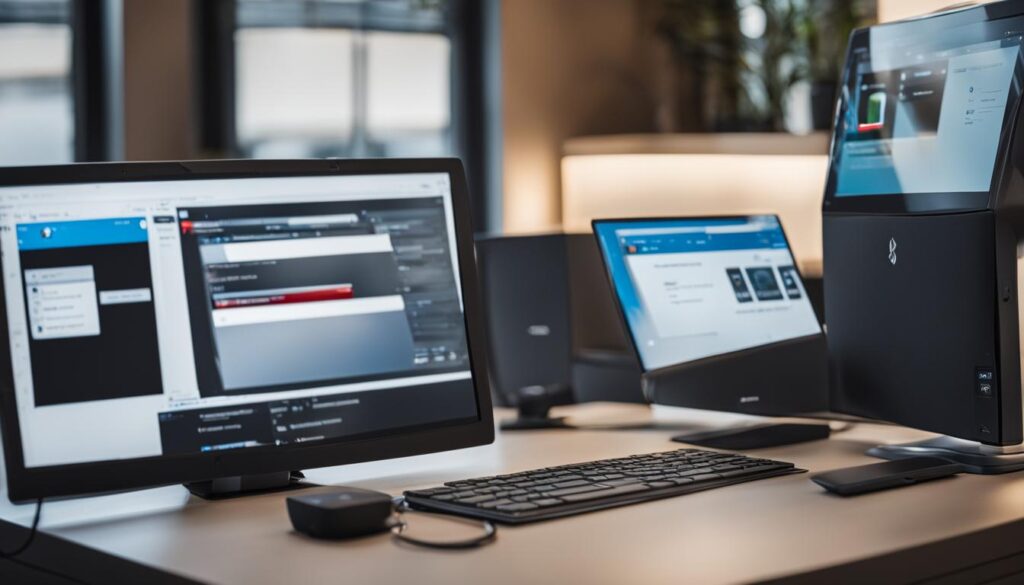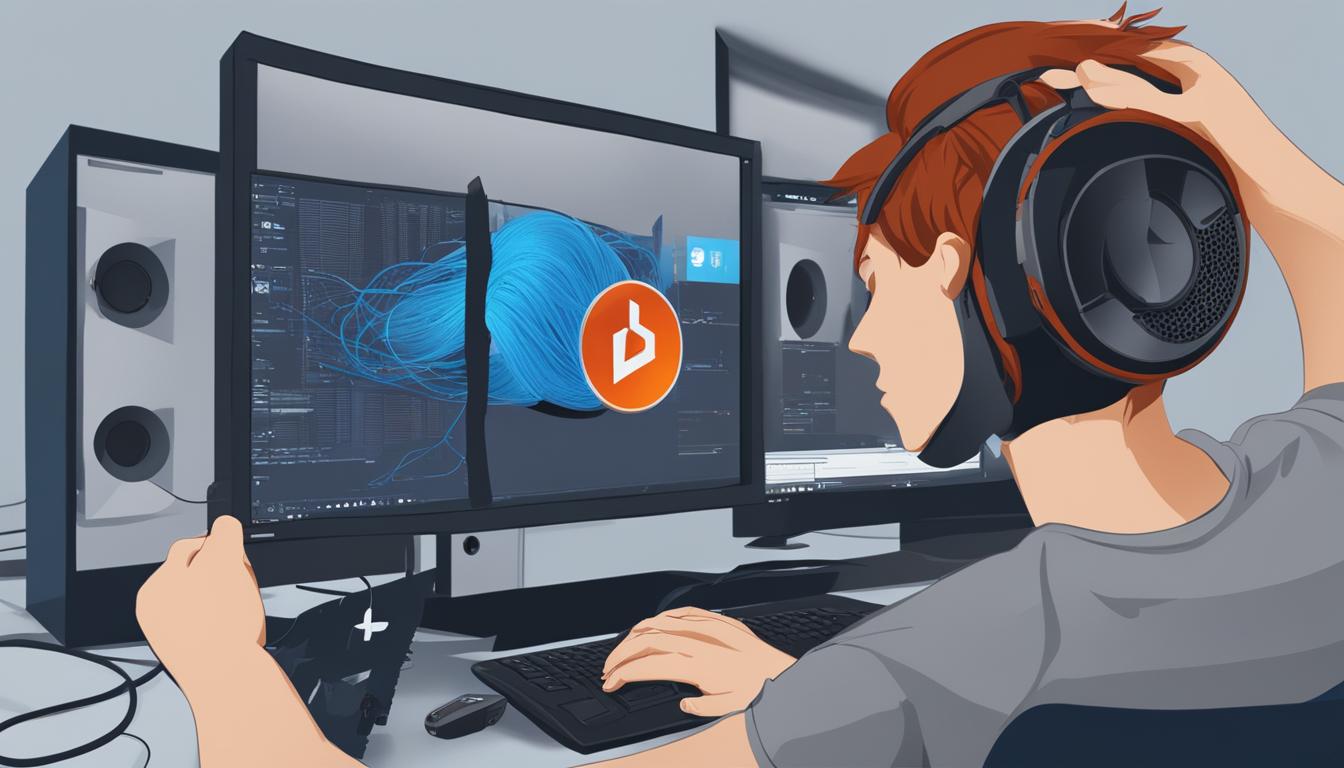Contents
- 1 Reasons for Bluetooth Not Working on Windows 10
- 2 Ensure Bluetooth is Enabled
- 3 Restart Bluetooth and Check Device Compatibility
- 4 Update or Reinstall Bluetooth Drivers
- 5 Check for Windows 10 Updates
- 6 Remove and Re-pair Bluetooth Devices
- 7 Run the Bluetooth Troubleshooter
- 8 Conclusion
- 9 FAQ
- 9.1 What are the common reasons for Bluetooth not working on Windows 10?
- 9.2 How do I ensure that Bluetooth is enabled on Windows 10?
- 9.3 How can I restart Bluetooth and check device compatibility?
- 9.4 How do I update or reinstall Bluetooth drivers on Windows 10?
- 9.5 Why is it important to check for Windows 10 updates?
- 9.6 How do I remove and re-pair Bluetooth devices on Windows 10?
When Bluetooth not working on Windows 10, it can be a frustrating experience. However, there are several common reasons why Bluetooth may not be functioning properly, and fortunately, there are solutions to fix these issues. In this article, I will provide you with proven troubleshooting steps to resolve Bluetooth problems on Windows 10, based on factual data and expert recommendations.
Reasons for Bluetooth Not Working on Windows 10
Bluetooth connectivity issues can be a source of frustration for Windows 10 users. If you’re experiencing problems with Bluetooth on your device, there are several common reasons why this might be happening. Listed below are some of the most frequent issues encountered:
- Inability to connect to devices: This problem occurs when your Windows 10 device fails to establish a connection with a Bluetooth-enabled device such as a speaker, headset, or keyboard.
- Windows 10 not discovering Bluetooth devices: If your device is unable to detect nearby Bluetooth devices, it can make pairing and connecting impossible.
- Bluetooth pairing issues: Pairing problems can lead to connection failures and interrupted device interactions.
These issues can arise due to a variety of factors, including:
- Software conflicts and compatibility issues
- Outdated or incompatible drivers
- Incorrect Bluetooth settings
- Hardware malfunctions
To resolve Bluetooth working on Windows 10, it’s important to identify the root cause and perform the necessary troubleshooting steps. In the next sections, I will guide you through the solutions to fix Bluetooth problems on Windows 10, enabling you to enjoy seamless wireless connectivity.
Ensure Bluetooth is Enabled
One of the first troubleshooting steps for bluetooth not working on Windows 10 is to ensure that Bluetooth is enabled. Without enabling Bluetooth, you won’t be able to establish a connection with other devices. To enable Bluetooth on your Windows 10 device, follow these simple steps:
You can enable Bluetooth through the Settings menu. Here’s how:
- Open the Start menu by clicking on the Windows icon in the bottom left corner of the taskbar.
- Click on the Settings (gear) icon to open the Windows Settings menu.
- In the Settings menu, click on the “Devices” option.
- In the left sidebar, click on “Bluetooth & other devices”.
- In the right panel, toggle the switch under “Bluetooth” to turn it on.
Once Bluetooth is enabled, you can check if it resolves the issue with Bluetooth not functioning on Windows 10 .

Restart Bluetooth and Check Device Compatibility
If you’re experiencing issues with bluetooth not working on Windows 10, a quick restart of the Bluetooth settings can often resolve the problem. By turning off Bluetooth and then turning it back on, your device will initiate a fresh search for available Bluetooth devices, potentially resolving any connection issues you may be encountering.
Here’s a step-by-step guide on how to restart Bluetooth and check device compatibility on Windows 10:
- Open the Start menu and click on “Settings.”
- In the Settings menu, select “Devices.”
- Under the “Bluetooth & other devices” section, toggle the Bluetooth switch to the “Off” position.
- Wait for a few seconds, then toggle the Bluetooth switch back to the “On” position.
- Once Bluetooth is enabled again, check if your device can now connect to available Bluetooth devices.
- If the issue persists, ensure that the Bluetooth device you’re trying to connect to is compatible with Windows 10. Check the manufacturer’s website for any necessary driver updates or software downloads.
Update or Reinstall Bluetooth Drivers
Outdated or corrupted Bluetooth drivers can often cause Bluetooth problems on Windows 10. To fix bluetooth not working on Windows 10, it is crucial to update or reinstall the Bluetooth drivers to ensure compatibility and functionality. Here’s how:
Update drivers through Device Manager:
Press the Windows key + X, then select Device Manager from the menu.
In the Device Manager window, expand the “Bluetooth” category.
Right-click on your Bluetooth device and select “Update driver.”
Choose the option to search automatically for updated driver software.
Follow the on-screen instructions to complete the installation process.
Download drivers from the manufacturer’s website:
Identify the manufacturer and model of your Bluetooth device.
Open a web browser and go to the manufacturer’s official website.
Navigate to the “Support” or “Downloads” section of the website.
Search for the latest Bluetooth drivers compatible with your device and Windows 10.
Download the driver package to your computer.
Locate and double-click the downloaded file to initiate the installation.
Follow the on-screen instructions to complete the installation process.
Note: Before updating or reinstalling the Bluetooth drivers, it is recommended to unpair and disconnect any Bluetooth devices from your Windows 10 system to avoid any potential conflicts.
Check for Windows 10 Updates
Keeping your Windows 10 system up to date is crucial for ensuring optimal performance and compatibility with Bluetooth devices. Microsoft regularly releases updates that include bug fixes and improvements, which can help resolve bluetooth not working on Windows 10.
To check for Windows 10 updates and install any available updates, follow these steps:
- Click on the “Start” menu.
- Select “Settings” from the menu options.
- In the Settings window, click on “Update & Security.”
- Click on “Windows Update” in the left sidebar.
- Click on the “Check for updates” button.
- If any updates are available, click on “Download and install” to begin the installation process.
- Wait for the updates to download and install.
- Restart your computer if prompted.
By keeping your Windows 10 system up to date, you can ensure that any Bluetooth-related issues are addressed and resolved.
If you’re still experiencing bluetooth not working on Windows 10, continue reading the next section for additional troubleshooting steps.
Remove and Re-pair Bluetooth Devices
Sometimes, Bluetooth connectivity issues on Windows 10 can be attributed to problems with pairing. If you are experiencing difficulties connecting your Bluetooth device, one effective troubleshooting step is to remove the device from your Windows 10 device and then re-pair it. This process helps establish a fresh connection and resolves any pairing-related problems that may be causing the issue.
To remove and re-pair a Bluetooth device on Windows 10, follow these steps:
- Open the Settings menu by clicking on the Start button and selecting the gear icon.
- Click on the “Devices” option in the Settings menu.
- In the left-hand menu, select “Bluetooth & other devices.”
- Under the “Devices” section, locate the Bluetooth device you want to remove and click on it.
- Click on the “Remove device” button.
- Confirm the removal by clicking “Yes.”
Once you have successfully removed the Bluetooth device, you can proceed to re-pair it by following these steps:
- Make sure the Bluetooth device you want to re-pair is in pairing mode.
- Return to the “Bluetooth & other devices” section in the Settings menu.
- Click on the “Add Bluetooth or other device” button.
- Select “Bluetooth” from the list of device types.
- In the device listing, locate the Bluetooth device you want to re-pair and click on it.
- Follow any additional prompts or instructions provided by Windows 10 to complete the pairing process.
By removing and re-pairing your Bluetooth devices, you can eliminate any potential pairing issues and ensure a stable connection between your Windows 10 device and the Bluetooth device.
Run the Bluetooth Troubleshooter
In order to resolve bluetooth not working on Windows 10, you can take advantage of the built-in Bluetooth troubleshooter. This powerful tool can scan your system for specific Bluetooth issues and automatically provide troubleshooting steps and fixes.
To run the Bluetooth troubleshooter, follow these simple steps:
- Open the Settings menu by clicking on the Start button and selecting the gear icon.
- Within the Settings menu, locate and click on the “Update & Security” option.
- In the left sidebar of the “Update & Security” window, click on the “Troubleshoot” tab.
- Scroll down until you find the “Bluetooth” option under the “Find and fix other problems” section.
- Click on the “Bluetooth” option to expand it.
- Click on the “Run the troubleshooter” button to initiate the scan and troubleshooting process.
- Follow the on-screen instructions provided by the Bluetooth troubleshooter to fix any identified issues.
By running the Bluetooth troubleshooter, you can quickly identify and resolve underlying problems that may be causing Bluetooth malfunctions on your Windows 10 device.
Conclusion
Resolving bluetooth not working on Windows 10 can be a frustrating task, but with the right troubleshooting steps, you can easily fix common problems and regain seamless wireless connectivity. By following the solutions provided in this guide, you’ll be able to troubleshoot and resolve Bluetooth issues effectively.
FAQ
What are the common reasons for Bluetooth not working on Windows 10?
Common reasons include software conflicts, outdated drivers, incorrect settings, or hardware malfunctions.
How do I ensure that Bluetooth is enabled on Windows 10?
You can enable Bluetooth through the Windows 10 Action Center or the Settings menu.
How can I restart Bluetooth and check device compatibility?
Turn off Bluetooth and then turn it back on. Ensure that the Bluetooth device you are trying to connect to is compatible with Windows 10.
How do I update or reinstall Bluetooth drivers on Windows 10?
You can update or reinstall Bluetooth drivers through the Device Manager or by downloading them from the manufacturer’s website.
Why is it important to check for Windows 10 updates?
Windows updates often include bug fixes and improvements that can resolve Bluetooth issues.
How do I remove and re-pair Bluetooth devices on Windows 10?
You can remove Bluetooth devices from your Windows 10 device and then re-pair them through the Settings menu and Device Manager.
